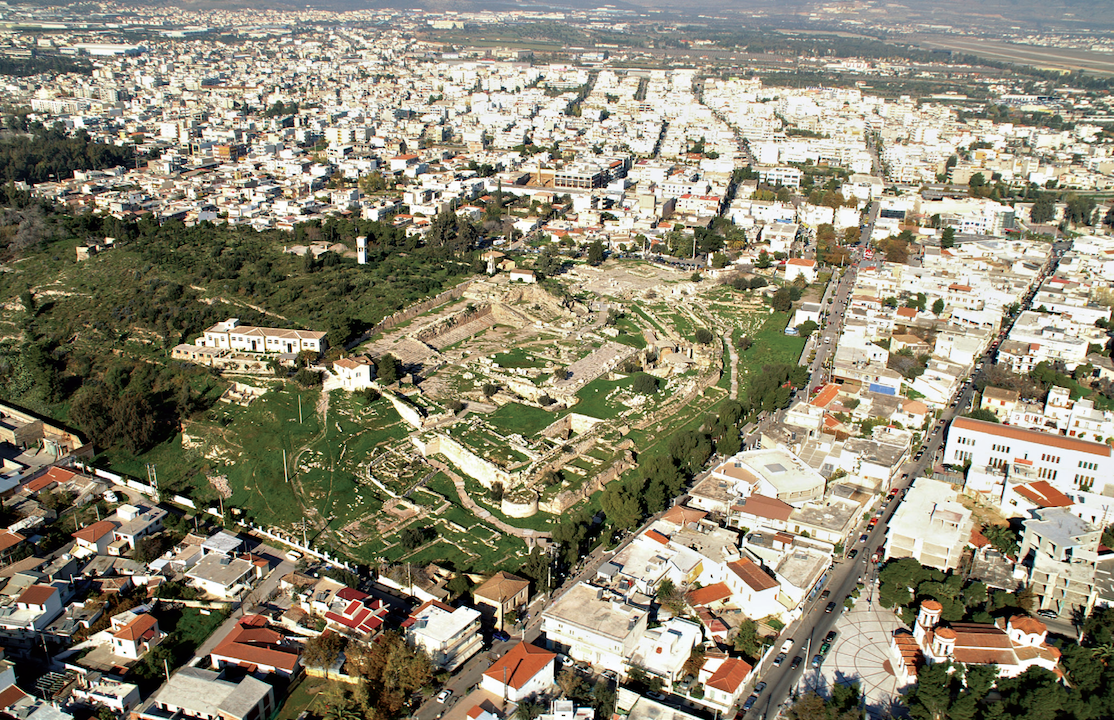Description
Eleusis. Though very limited, the earliest evidence of human presence in the region dates from the Early Helladic period but is scarce. Eleusis was inhabited as early as the Middle Helladic period. During the Late Helladic period, the settlement expanded considerably, covering the entire hill. This is the phase which is traditionally associated with the legendary king Celeus; according to the Homeric Hymn, it was during his reign that the very first temple of Demeter was built. The archaeological data suggest that a significant population decrease occurred during the 12th and 11th centuries, a period of upheaval and turbulence associated to the disasters and population movements attested all over the Greek world. The earliest evidence for a more substantial habitation at Eleusis dates from the 10th century. During Theseus’ reign, the Eleusinians were conquered by the Athenians and were included in the Hippothoontis tribe. Around 760, a Delphic oracle imposed the establishment of a festival honouring Demeter at Eleusis, where all Greek city-states would participate. During the 3rd quarter of 7th century, Eleusis resumed its autonomy; however, it was only for a short period of time. By the end of the century, that is during the rule of Solon, the town was once more occupied by the Athenians.
The celebrations in honour of Demeter in Athens and Eleusis would take place during the same time of the year. During the rule of Peisistratus and his successors, the Athenian dominance over Eleusis was stabilised, whereas the Eleusinian shrine was adorned through the erection of impressive buildings. In the time of Pericles, the worship of Demeter had developed into a Panhellenic cult and people from all over the Greek world would travel as far as Eleusis in order to be initiated into the Mysteries. The Eleusinian shrine’s most impressive architectural phase occurred during the Imperial period, when Hadrian, Antoninus Pius and Marcus Aurelius sponsored major construction and repair projects. It was then that the right to become initiated into the Great Mysteries of Eleusis, an exclusively Greek privilege until then, was offered to subjects of the Roman Empire. In AD 170, Eleusis suffered the brutal Kostovok attack. As the badly damaged temple buildings were repaired very soon after the attack, the sanctuary’s did not cease. This happened slightly later, as a result of Christianity’s eventual predominance and the decrees against the Dodecatheon cults issued by the Byzantine emperors during the 4th century AD. The final blow was provided by Alaric’s Visigoths, who plundered the Eleusinian sanctuary in AD 395.
The celebrations in honour of Demeter in Athens and Eleusis would take place during the same time of the year. During the rule of Peisistratus and his successors, the Athenian dominance over Eleusis was stabilised, whereas the Eleusinian shrine was adorned through the erection of impressive buildings. In the time of Pericles, the worship of Demeter had developed into a Panhellenic cult and people from all over the Greek world would travel as far as Eleusis in order to be initiated into the Mysteries. The Eleusinian shrine’s most impressive architectural phase occurred during the Imperial period, when Hadrian, Antoninus Pius and Marcus Aurelius sponsored major construction and repair projects. It was then that the right to become initiated into the Great Mysteries of Eleusis, an exclusively Greek privilege until then, was offered to subjects of the Roman Empire. In AD 170, Eleusis suffered the brutal Kostovok attack. As the badly damaged temple buildings were repaired very soon after the attack, the sanctuary’s did not cease. This happened slightly later, as a result of Christianity’s eventual predominance and the decrees against the Dodecatheon cults issued by the Byzantine emperors during the 4th century AD. The final blow was provided by Alaric’s Visigoths, who plundered the Eleusinian sanctuary in AD 395.



